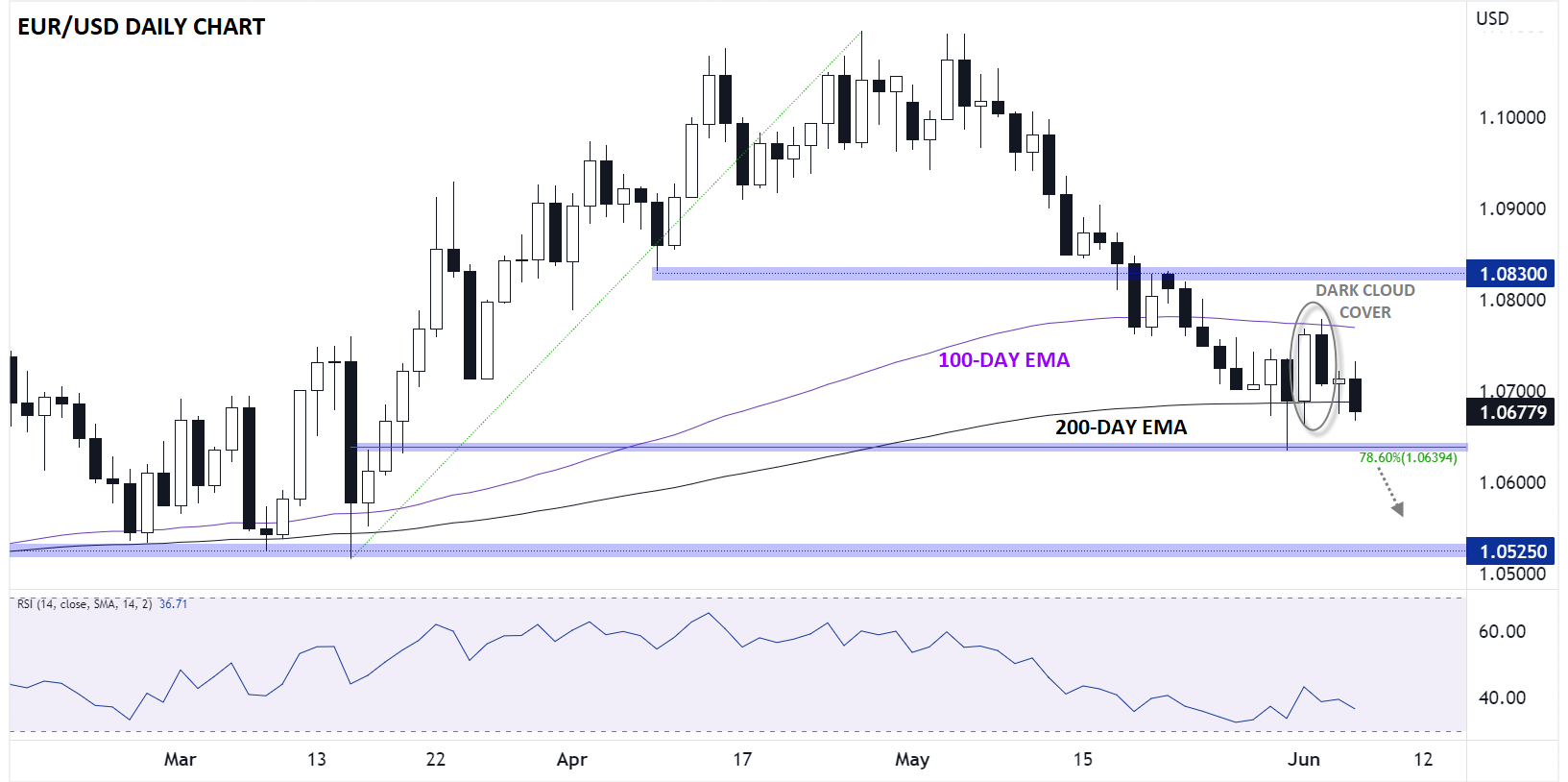- A run of weak economic data suggests that Eurozone growth is faltering in Q2, highlighted by today’s soft German factory orders report.
- EUR/USD tried to bounce off its 200-day EMA last week but that move has already been reversed in this week’s trade.
- A break below 1.0640 support could expose the year-to-date lows in the low-1.0500s next.
When it comes to economic performance, it’s all about expectations.
Heading into the winter, traders and economists were terrified of an “energy crunch” in the Eurozone leading to a deep recession. Instead, the warmer-than-feared winter allowed mainland Europe to squeak by with mediocre-but-better-than-expected 0.1% growth through the first quarter of this year (though that figure will be revised later this week).
Now though, after the better-than-anticipated growth early in Q1, the signs are piling up that the Eurozone economy is sputtering in Q2. Earlier today, traders learned that German factory orders fell -0.4% in April, defying expectations for a 2.8% rise after March’s -10.7% drop.
Germany accounts for nearly a third of the entire Eurozone’s GDP, and if its key manufacturing sector continues to contract, it will be difficult for the continent to sidestep a recession, especially with the ECB continuing to hike interest rates through the summer.
Euro technical analysis – EUR/USD daily chart

As the chart above shows, the world’s most widely traded currency pair tried to bounce off its 200-day EMA near 1.0700 last week, but that move has already reversed. For fans of candlestick patterns, Friday’s price action created a clear “dark cloud cover” pattern, signaling a shift from buying to selling pressure and marking a near-term top for the pair; today’s price action shows potential for a similar pattern, if not an even more bearish “engulfing candle” formation.
With EUR/USD now on track to close below its 200-day EMA for the first time since last November, the last near-term support level to watch comes in at 1.0640, at the confluence of last week’s low and the 78.6% Fibonacci retracement of the pair’s March-April rally.
A break below 1.0640 would expose the year-to-date lows near 1.0500, whereas even a bounce off that support zone would likely be treated with skepticism unless and until the pair recaptures the 100-day EMA above 1.0775.
